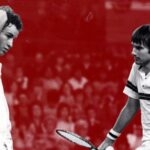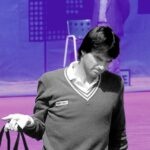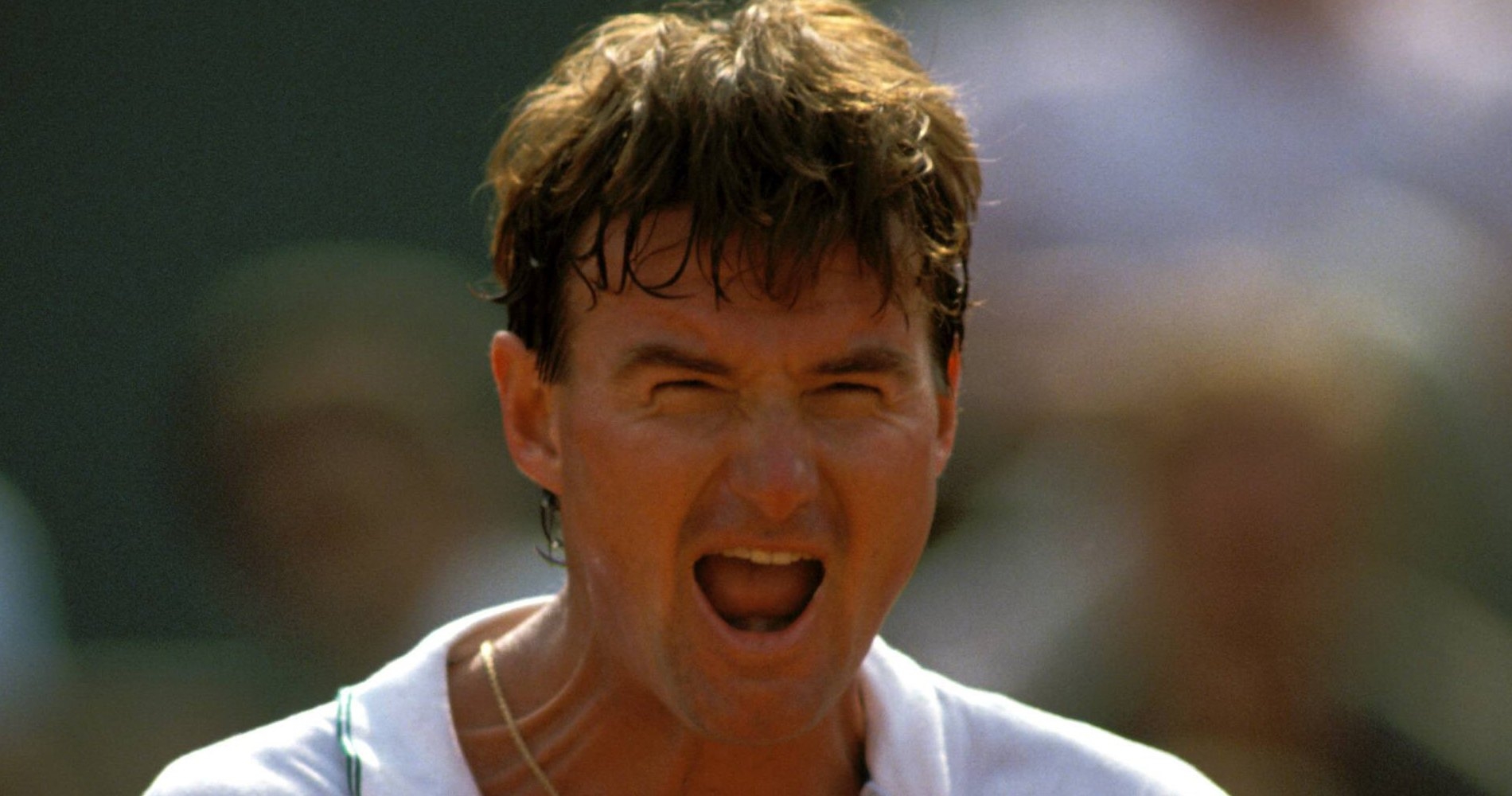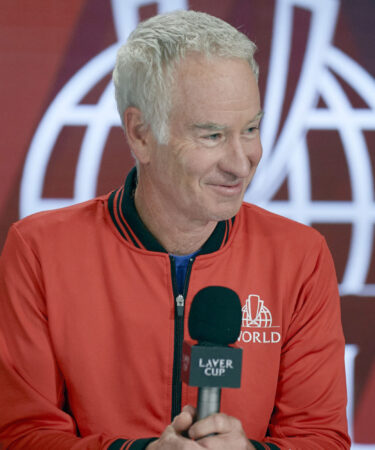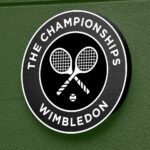December 16, 1984: The day Sweden upended John McEnroe and Jimmy Connors on the way to Davis Cup glory
Every day, Tennis Majors looks back at the biggest moments in tennis history. On December 16, 1984, Sweden upended John McEnroe and Jimmy Connors on their way to Davis Cup glory
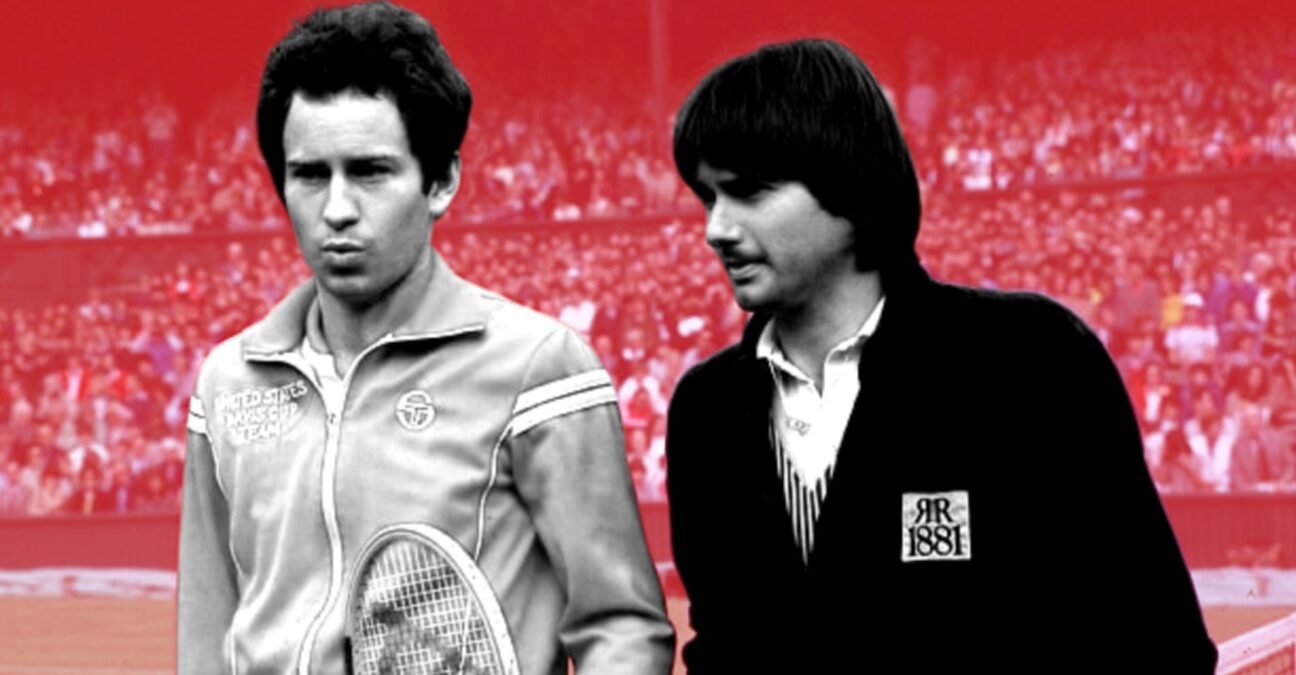 John McEnroe and Jimmy Connors
John McEnroe and Jimmy Connors
What happened exactly on that day?
On this day, December 16, 1984, in the Davis Cup final, the two best players in the world, John McEnroe and Jimmy Connors, the American dream team, were heavily defeated by Swedish players Mats Wilander and Henrik Sundstrom. After Wilander had destroyed Connors in the opening match (6-1, 6-3, 6-3), McEnroe suffered only his third loss of the year, defeated by Sundstrom in three straight sets (13-11, 6-4, 6-3). This surprising outcome would give Sweden the Davis Cup title, but also lead to a crisis in the American team.
The American Dream Team: The world’s top two – McEnroe and Connors
- John McEnroe: The world No 1 with seven Grand Slam singles titles
John McEnroe, born in 1959, was the world No 1 in 1984. The left-hander from New York had been amazing the tennis world since his first steps on the tour in 1977, when at the age of 17, showing up at Wimbledon as an amateur, he made his way out of the qualifying draw all the way to the semi-finals. “Mac” was enormously talented, his game being based on precision and touch on top of an iconic and lethal serve. He was also known for his outrageous on-court behaviour in the good-old–mannered world of tennis. He was sometimes vulgar and his constant quarrelling with the officials did not go unnoticed in a gentleman’s sport. In 1979, he became the youngest ever US Open Champion, defeating Vitas Gerulaitis (7-5, 6-3, 6-3).
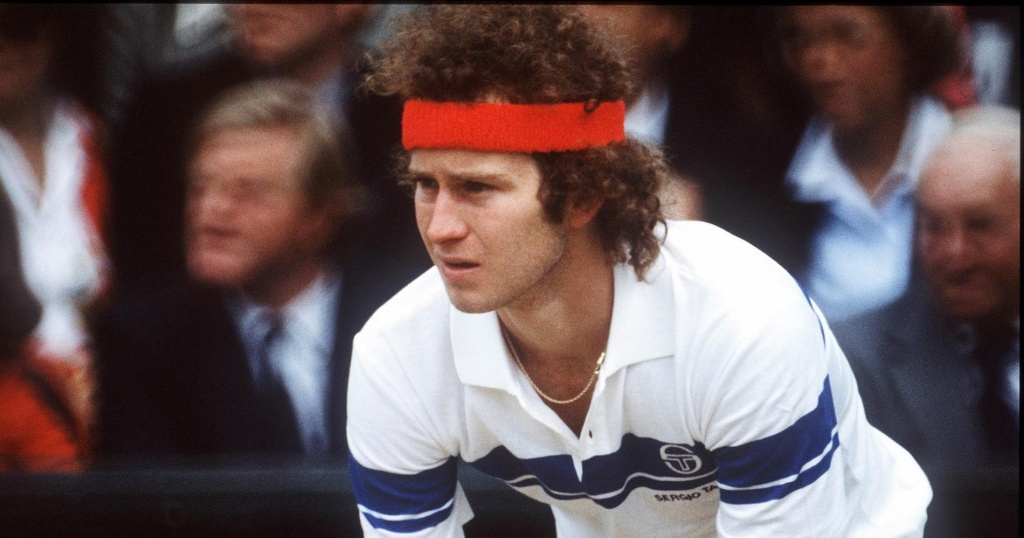
That year, he also made quite a sensation by edging Bjorn Borg (7-5, 4-6, 6-2, 7-6) to win the WTC Finals. By November 1984, he had already claimed seven Grand Slam titles, including four US Open and three Wimbledon crowns. His most famous match was the 1980 Wimbledon final, where he lost in five sets to Borg, after winning an outstanding tiebreak in the fourth set (18-16). No 1 in the world in 1984, he was at the end of his greatest year on the circuit. After a heartbreaking loss in the French Open final (when he lost to Lendl despite a two-set lead, 3-6, 2-6, 6-4, 7-5, 7-5), he triumphed at both Wimbledon and the US Open, and had lost only one match since Roland-Garros (against Vijay Amritraj, in the first round of Cincinnati).
- Jimmy Connors: The eight-time Grand Slam singles champion
Jimmy Connors, born 1952, was one of the greatest tennis players of his time. Coached by his mother Gloria, Connors was one of the first few players to hit the ball flat and mainly from the baseline. Hitting the ball on the rise, his game would be very influential for future generations of tennis players. “Jimbo” turned pro in 1972 and became world No 1 by 1974. In fact, that year he won three out of the four Grand Slam tournaments, and was not permitted to participate in Roland-Garros, the fourth one, due to a lawsuit he filed against the ATP.

He stayed at the top spot of the ATP Rankings for a record of 160 weeks in a row, from 1974 to 1977. Losing his throne to Borg on August 23, 1977, for just one week, he reclaimed it for another 84 weeks, until the spring of 1979. Connors had already accumulated five Grand Slams: the Australian Open (1974), Wimbledon (1974) and the US Open (1974, 1976, 1978). Between 1979 and 1981, Connors did not perform as well as in his peak years, failing to reach any Grand Slam final. He made a big comeback in 1982-83, becoming world No 1 again by claiming three more Grand Slam titles: Wimbledon in 1982, and the US Open in 1982 and 1983, taking his total of Major titles to eight. At the end of 1984, he was still holding the second spot on the ATP rankings.
The Swedish Challengers: Mats Wilander and Henrik Sundstrom
Mats Wilander, born in 1964, was very successful at a particularly young age. In 1982, aged only 17 years and 10 months, he became the youngest player ever to lift a Grand Slam trophy, edging clay court legend Guillermo Vilas in the final (1-6, 7-6, 6-0, 6-4). He also made himself famous for a memorable act of sportsmanship earlier in the tournament. In the semi-final against Jose-Luis Clerc, on his first match point, he reversed a call that was sealing his victory after the umpire had already announced “game, set and match”.
In 1982, in a Davis Cup quarter-final, he also played the longest match of the Open Era, losing after six hours and 22 minutes of play to McEnroe (9-7, 6-2, 15-17, 3-6, 8-6). Runner-up to Frenchman Yannick Noah at Roland-Garros in 1983 (6-2, 7-5, 7-6), Wilander claimed a second Grand Slam crown a few months later, defeating Lendl (6-1, 6-4, 6-4) to triumph on the Australian grass to everyone’s surprise, as his game style was more suited for clay courts. In 1984, after losing to Lendl in the Roland-Garros final (6-3, 6-3, 7-5), he successfully defended his title in Melbourne (defeating Kevin Curren in the final, 6-7, 6-4, 7-6, 6-2).
Henrik Sundstrom was also born in 1964. He turned pro in 1981, and he reached his first final on the tour the following year in Bastad, defeated by Wilander (6-4, 6-4). In 1983, he claimed his first title, defeating Manuel Orantes in the final in Nice (7-5, 4-6, 6-3). Sundstrom was a real clay-court specialist: the four tournaments that he had won so far, as well as the six finals that he had reached, were all on red dirt, and he obtained his best Grand Slam result at Roland-Garros in 1984, reaching the quarter-finals (defeated by Connors, 7-6, 6-1, 6-4).
The place: The Scandinavian Arena, Gothenburg
The 1984 Davis Cup final was hosted by Sweden, and it was held on indoor clay at the Scandinavian Arena, in Gothenburg. The arena, inaugurated in 1971, had hosted many different sports events, from the World Ice Hockey Championships to the European Athletics Indoor Championships, but also many concerts, including Led Zeppelin or Deep Purple. The Scandinavian, Arena could accommodate roughly 12,000 spectators.
The facts: Superstar Americans outplayed on clay
“This is the worst trip I’ve ever been on.” In his autobiography, this is how McEnroe, who was a big music fan, would describe the 1984 Davis Cup final, quoting lyrics from a song by the Beach Boys.
Yet, in the eyes of the general public, the American team, featuring the two best-ranked players in the world, McEnroe and Connors, were the favourites against Sweden. Connors had rarely competed in the Davis Cup, and 1984 was the first year that he had committed to play the whole competition.
The Swedes, even if they were not tennis legends like the two bad-tempered left-handers, were still top players. Mats Wilander, world No 4, held three Grand Slam titles, and Henrik Sundstrom was world No 11. On top of that, they were clay-court specialists, and they had chosen to host the tie on a particularly slow court to neutralise their opponents’ aggressive game styles.
However, according to McEnroe, despite the value of the Swedish team and the surface issue, the United States had lost the tie before it had even started. “What’s the opposite of team spirit? That’s what we had in Gothenburg,” he wrote in his book.
The world No 1, mentally exhausted after a great but busy year, reluctantly left his partner, Tatum O’Neal, in New York, to team up with Connors. It was common knowledge that the two American players genuinely despised each other at the time – in fact, they were not even talking to each other. Furthermore, Connors’ wife was expecting their second child any day and as a consequence, his mind was not really focused on tennis.
“Jimbo” had always been known for his temper and his aggressive attitude, but this time, in the opening patch against the Swedish No 1, he surpassed himself, according to his rival and teammate. “Connors played Wilander the first day, and he completely lost it. He just snapped. I certainly know what it’s like to make an ass out of myself on a tennis court, but this was one of the all-time displays. He cursed and lashed out at everyone in sight, to the point where it felt like a miracle they didn’t default him. In Sweden!! In the Davis Cup final!!” McEnroe wrote.
In fact, not only did Connors lose heavily (6-1, 6-3, 6-3), but he was warned for an audible obscenity, was assessed a point for a second one and, was penalised a game for swinging his racket at the umpire’s chair. “I’ve played better,” summed up Connors.
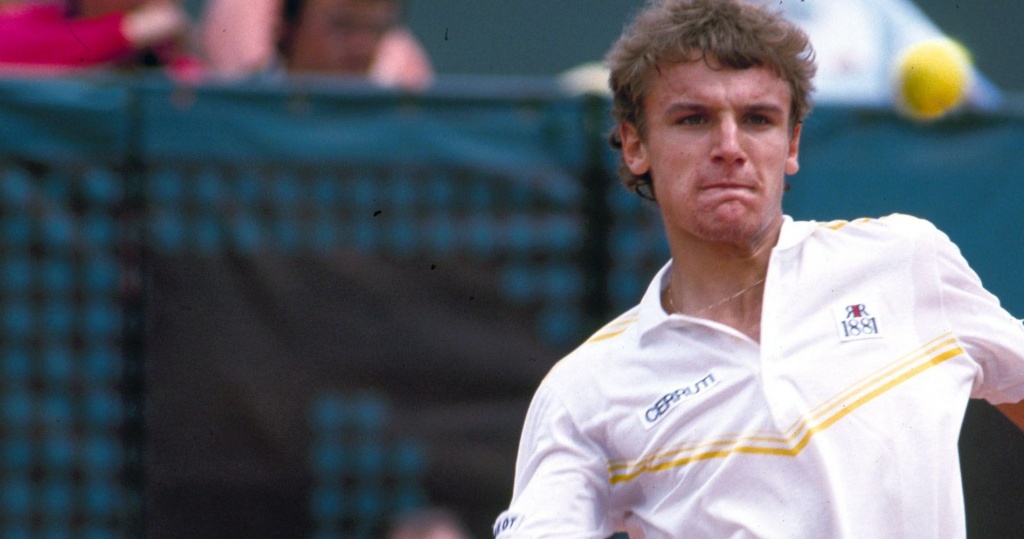
It was now McEnroe’s turn to play against Sundstrom. Or, more accurately, a pale version of McEnroe. “We have seldom seen McEnroe so out of touch with the ball,” commented Arthur Ashe, the US captain, according to The Los Angeles Times. The world No 1, although he obtained two set points in the two-hour long first set, was defeated in three sets (13-11, 6-4, 6-3). In his autobiography, McEnroe would state that he “didn’t get mad at all”, but The New York Times reported that he “engaged in shouted exchanges with several onlookers, questioned numerous calls, and pounded his racquet on the ground in frustration”.
At the end of that first day, the Swedish team couldn’t be happier about the outcome, although the players remained focused, knowing that anything could still happen. However, did the American players believe they could still reverse the scenario? It sounded like they didn’t.
“It isn’t any secret that clay is not our best surface,” said Ashe, knocked out after he had witnessed his dream team being crushed without even clinching a set.
“We still have a chance, but things aren’t looking too bright. We have the potential to lose 5-0,”, said McEnroe.
What next? Sweden win doubles to complete the famous victory
The following day, McEnroe and Peter Fleming would be defeated by Stefan Edberg and Anders Jarryd (7-5, 5-7, 6-2, 7-5), and Sweden would claim their first-ever Davis Cup title. There would be a last episode of the American debacle in Sweden. At the ceremonial dinner, the players would leave the premises just before the president of the USTA was to give his speech. Let’s give McEnroe the final word to the story. “However, the upshot of that whole week was that the USTA drafted a new Code of Conduct. From here on, if you didn’t sign the Code, you couldn’t play Davis Cup. I wouldn’t compete for my country for two years.”
